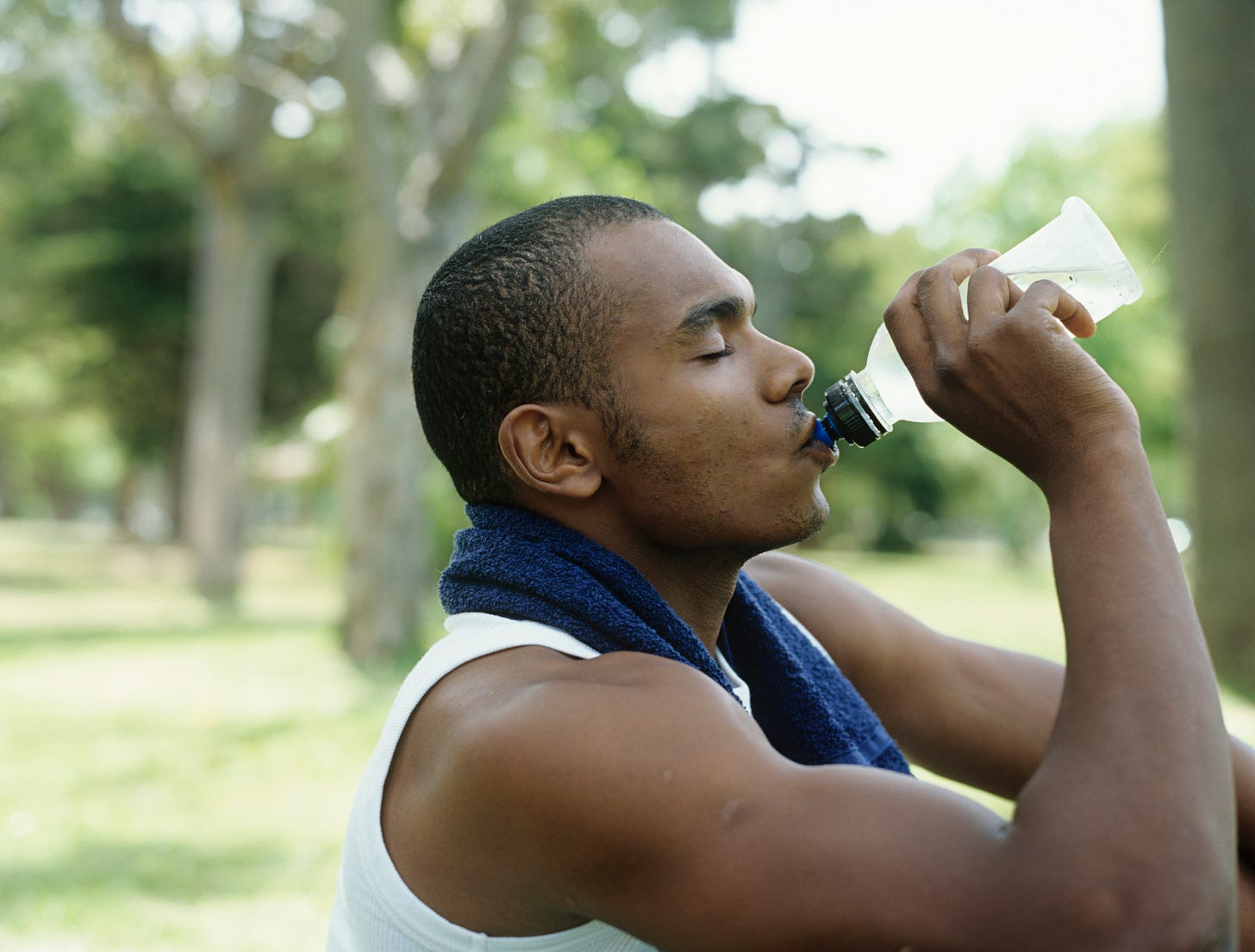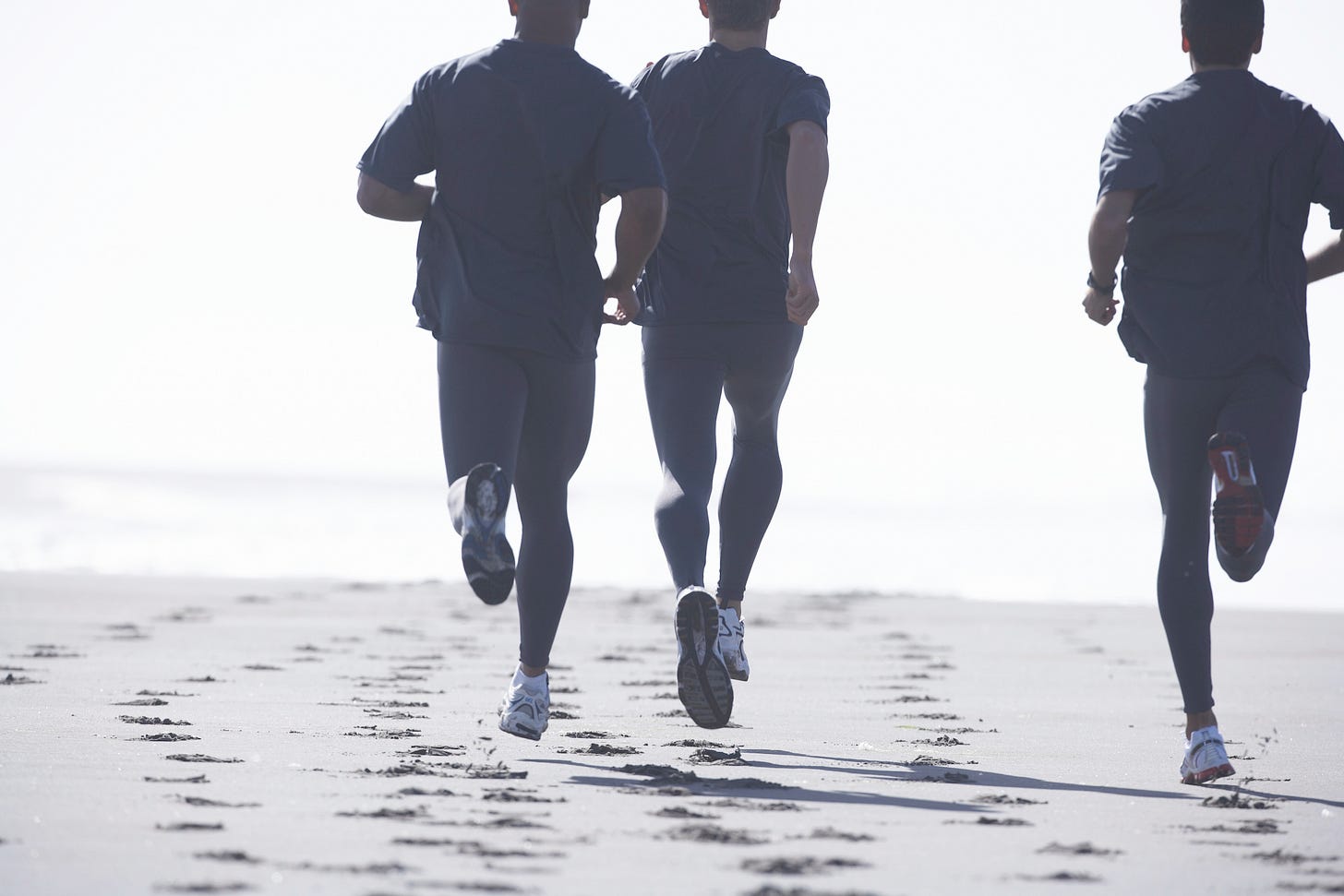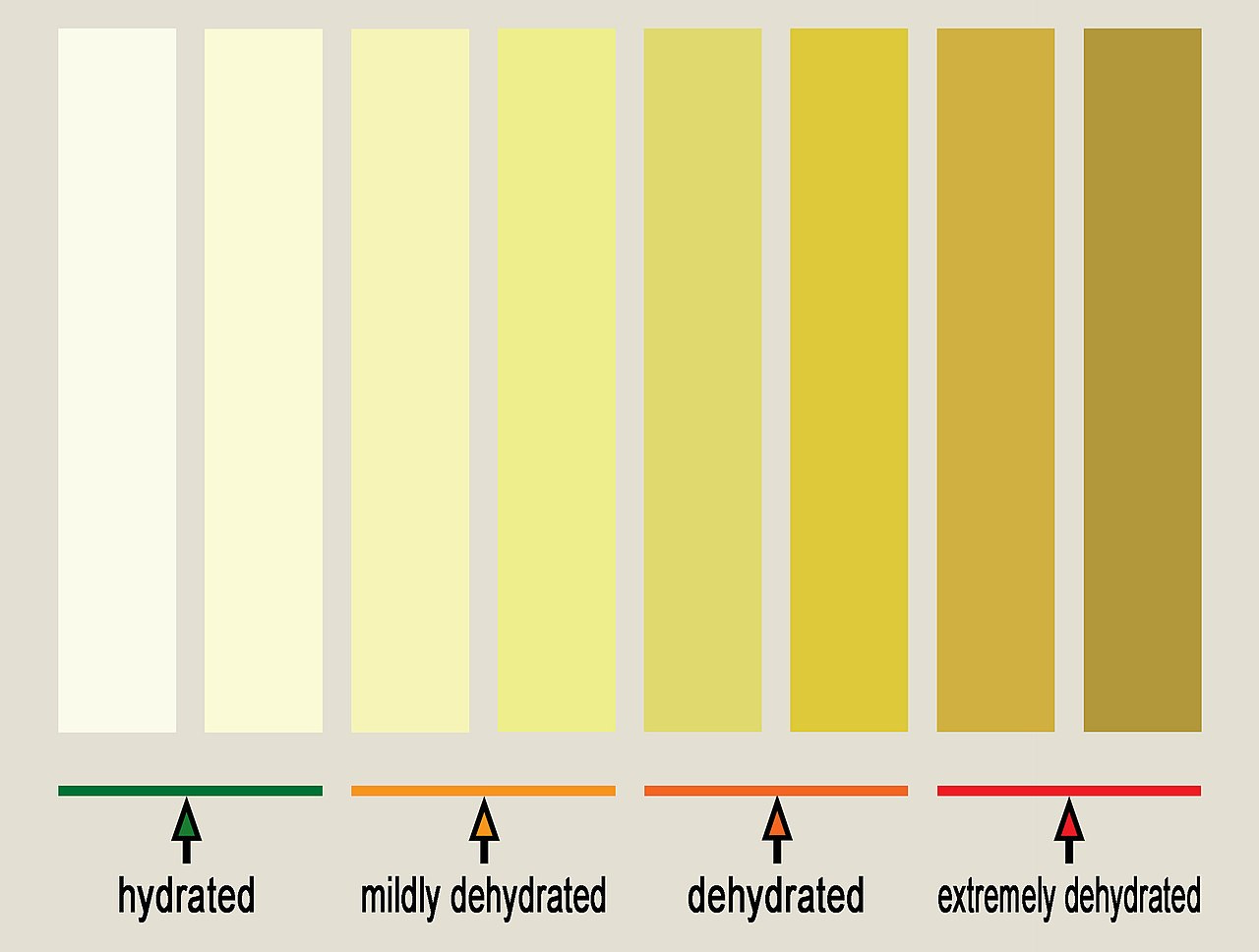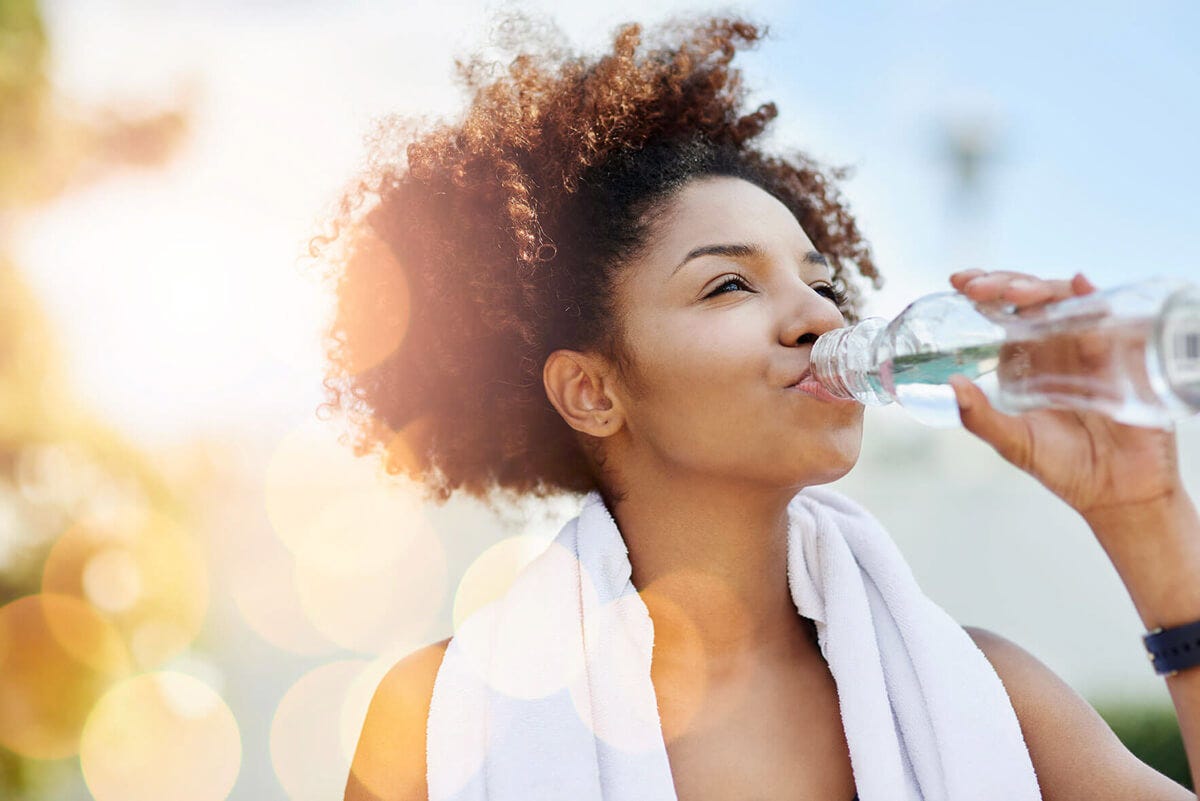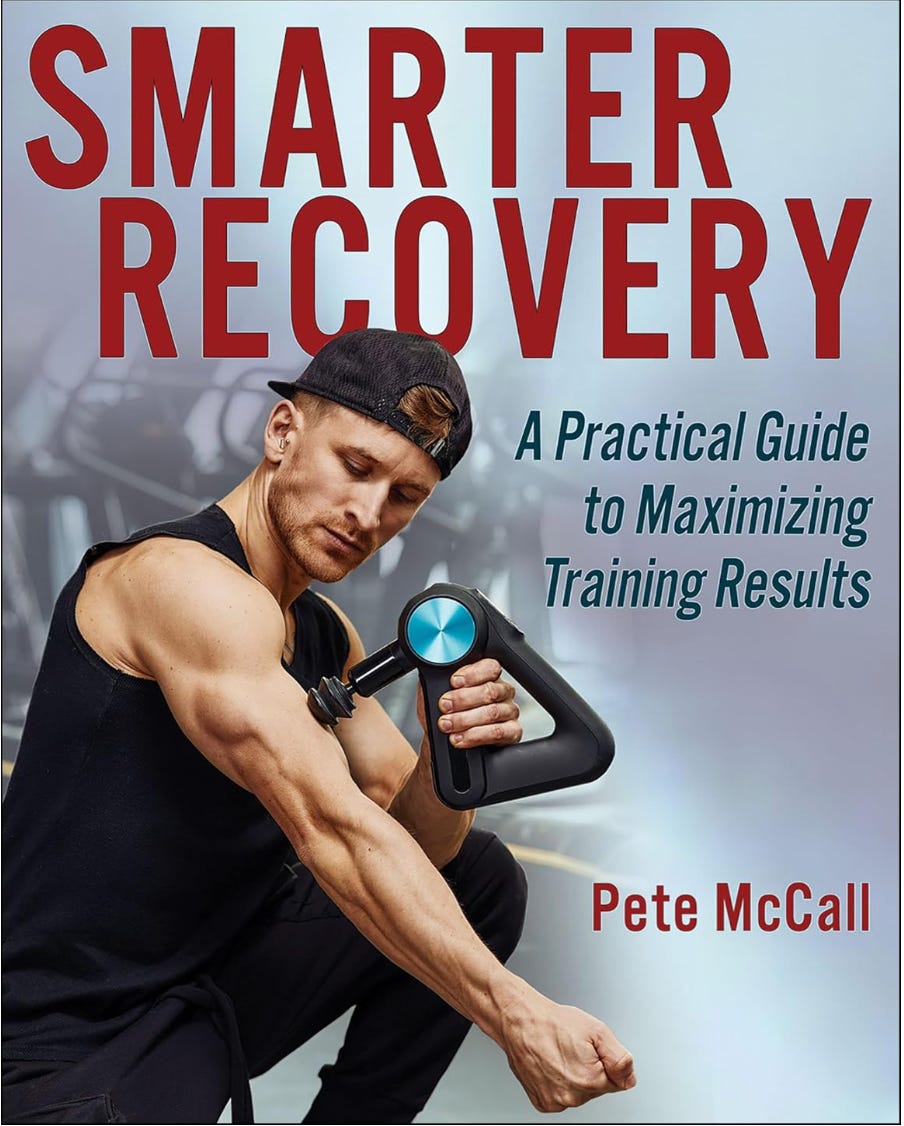8 Strategies for Staying Cool During Summer Workouts
Now that we are entirely into summer, here is what you need to know about heat, hydration and the benefits of staying cool and well-hydrated!
Summertime Blues
Growing up in the era of only 3 TV networks (Fox didn’t come onto the scene until the late 80s) , summertime meant 3 specific things: reruns on network television, over-hyped movie releases and heat (and, in much of the country, the dreaded humidity).
In some places, summer’s heat might be welcomed after the frigid drudgery of winter, while in others, the heat can be downright oppressive, making outdoor exercise almost unbearable at best and near deadly at worst.
Water is Essential for Optimal Performance
When it is hot outside, losing weight as the result of excessive sweating is not a good thing, rather, it could be an indicator of heat illness. Remember that up to 70% of your muscle tissue and blood are water, a loss of 3-5% percent of body weight in water could put you at risk for dehydration. A loss of > 5% of body weight is an indicator of severe heat stress which could be fatal.
Don’t let summer heat stop you from enjoying your favorite workouts or outdoor activities; for example, when possible, plan around the heat with early morning or evening workouts when the large fireball is not that high in the sky. More importantly, (MUCH more importantly) plan appropriate hydration strategies so you can move your body, no matter what the thermometer says.
Hot weather stresses your body’s thermoregulatory system, increasing the risk of dehydration, heat exhaustion, and even life-threatening heat stroke. During summer temps (or anytime there is excessive heat), maintaining proper hydration and understanding how the body regulates temperature are essential for your workouts.
Staying strong and fit means exercising and staying active, no matter what the thermometer says. Once upon a time I wrote an education course for fitness professionals on thermoregulation and hydration, as well as including proper hydration protocols in my book, Smarter Recovery (Rehydrate is one of the 4 ‘R’s’ of recovery); now I’m sharing that info so you can stay properly hydrated during the heat of summer.
Problem: Heat Stress & Heat Stroke Could be Fatal
Sweating is normal, however, in excessive heat, you can experience up to 2–3 liters/hour of sweat loss during exercise. Excessive heat or inadequate hydration places stress on your body, and when it (your body) is not able to properly thermoregulate, heat-related illnesses can occur on a spectrum from mild to severe:
1. Heat Cramps - A Sign of Dehydration
Symptoms: Muscle spasms due to electrolyte imbalances.
Action: hydrate and change the intensity or stop the activity.
2. Heat Exhaustion - Time to STOP!!!
Symptoms: Heavy sweating, weakness, cold/clammy skin, dizziness, nausea, rapid pulse.
Action: Stop activity, get to a cool area, hydrate, and rest - focus on the recovery phase of training.
When being active in heat, losing 3-5% of bodyweight in water is an indication of heat exhaustion.
3. Heat Stroke (Medical Emergency)
Symptoms: Body temperature >104°F (40°C), confusion, dry/hot skin (cessation of sweating), rapid breathing, possible unconsciousness.
Action: Call emergency services immediately; attempt to cool the person using ice packs, cold water, and ventilation.
When being active in heat, losing more than 5% of bodyweight in water is an indicator of heat stroke - which could be fatal.
Heat stroke is life-threatening and requires immediate medical intervention.

The Physiology of Sweat
Thermoregulation is how your body controls its inner temperature, around 98 degrees Fahrenheit, when at rest. Physical activity, whether running an ultra-marathon or walking the dog around the block, is a stress on your body that will elevate your core temperature requiring the need for thermoregulation and sweating is the primary way to control internal temps. When heat or exercise, or a combo, cause your internal temperature to rise, the following mechanisms cool your body:
Sweating: Evaporation of sweat from the skin dissipates heat.
Vasodilation: Blood vessels near the skin surface widen, increasing blood flow to help release heat.
Respiratory Cooling: Breathing rates increase to aid heat release through the lungs.
Convection and Radiation: Heat is lost through air movement and the emission of infrared radiation from the skin.
The challenge becomes in hot and humid conditions, evaporative cooling becomes less effective, because sweat does not evaporate as readily, which can lead to rapid overheating
Why we Sweat
During moderate-to-intense exercise (approximately a 7-10/10 level of rate of perceived exertion with 10 being the highest):
Energy metabolism (converting fat and carbs to adenosine triphosphate (ATP)) for muscle contractions generate heat.
The heat from repetitive muscle contractions increases your core temperature.
The body activates cooling mechanisms, primarily evaporative cooling through sweat to prevent overheating.
How we Sweat
1. Thermal Signal Detected by the Hypothalamus
The hypothalamus in your brain is the thermostat for temperature regulation.
Thermoreceptors in the skin and blood sense the change in heat as your core temperature rises.
In response, your hypothalamus sends the signal to get rid of the heat via vasodilation (increasing size of blood vessels) and sweat production.
2. Activation of Sweat Glands
Your skin contains eccrine sweat glands, especially on the forehead, back, chest, palms, and soles.
When stimulated, the eccrine glands begin to produce sweat from extracellular fluid (found in the interstitial space of muscle cells).
3. Composition of Sweat
When first produced, sweat contains water, sodium, chloride, potassium, urea, and lactate (sodium and potassium are electrolytes which help muscle cells absorb water, lactate is a by-product of anaerobic metabolism - the breakdown of glycogen without oxygen).
Sodium and chloride are reabsorbed as the fluid moves through the sweat ducts on the way to the surface of the skin.
The process of acclimatizing (adapting) to heat causes sweat glands to become more efficient at reabsorbing electrolytes, allowing for sustained sweat production with less salt loss.
When heat spikes +10 degrees more than normal (like heat wave, or early in the season), the body does not have a chance to adapt, therefore, it’s a good idea to significantly reduce training volume or intensity.
4. Evaporative Cooling
Cooling occurs as sweat evaporates from the skin.
This evaporation absorbs body heat, approximately 580 kcal of energy is lost per liter of sweat evaporated.
The ambient temperature, humidity, and airflow will significantly effect this process:
Circulating air and dry heat improve evaporation.
Humidity levels can have a negative impact on evaporation, making sweating less effective and increasing risk of heat illness.
Solution: Hydration & Performance Strategies for Heat
Monitor Your Urine to Manage Hydration
If your urine is the color of light yellow to clear, you’re hydrated; once urine starts getting the color of lemonade or darker - DRINK UP!
Why Staying Hydrated Matters:
Supports sweat production for evaporative cooling.
Maintains plasma volume for optimal cardiovascular function.
Helps regulate and manage electrolyte (essential for optimal muscle contractions) balance.
Hydration Recommendations for Summer Activity
The American College of Sports Medicine (ACSM) and National Athletic Trainers' Association (NATA) recommend:
Before Activity:
Drink 16–20 oz (500–600 mL) of water 2–3 hours before exercise.
Optional: 8–10 oz (200–300 mL) 20–30 minutes before starting.
During Activity:
Drink 7–10 oz (200–300 mL) every 10–20 minutes, depending on intensity and heat.
Use a sports drink with electrolytes if exercise lasts longer than 60 minutes or involves heavy sweating.
After Activity:
Drink 16–24 oz (500–700 mL) of fluid per pound (0.5 kg) of body weight lost.
Replace electrolytes through food or sports drinks if sweat loss was excessive.
With that knowledge, here are 8 strategies for staying cool during summer workouts:
Air conditioning or proper air circulation are the most effective means of controlling heat. If exercising in an air-conditioned environment is not possible, then try to work-out in an environment with proper air circulation to promote optimal thermoregulation.
The early morning is the coolest time of day, when possible, exercise first thing in the morning before the heat sets in. You know it’s going to be a hot day when you take your first step outside and can feel the heat in the air before the sun is above the horizon. Two issues about exercising in the evening are that asphalt or concrete surfaces can retain and give off heat and a lack of available daylight makes visibility (and safety) an issue. An added benefit is that you knock it out, giving you the rest of the day to do other things.
Wear moisture-wicking tops. It can be tempting to shed shirts and exercise bare chested (guys) or in a minimal sports top (women) but wearing a shirt can actually help you stay cooler because the sweat is being removed from the skin. The more efficiently water can be removed from the surface of your skin, the cooler you will stay during the workout.
Limit heat exposure. Which means that when it is hot outside, exercising in studios where the temperature is artificially elevated is not the best idea. For your information, extra heat may help you burn a few more calories but it is just that: only a few. The heat stress from a hot studio when combined with normal summer heat could cause long-term stress and damage to your body. Save the hot yoga for the cooler months when you’ll want to be warm and toasty.
Take an after workout ice-bath. If you play outdoor sports or have a long, hard outdoor training session in the heat, one of the best ways to bring your core temperature down is using an ice bath. Ice baths are also an effective means of promoting muscle recovery which can be important if you are participating in a multi-day tournament or want to train hard two days in a row. There’s a reason why football teams from high school to the professional level use ice baths during summer two-a-days, they work! If you find an ice bath tough to bear, do what many football players do: wear a hoodie or sweatshirt, yes it will get wet but it can help you be more comfortable. NOTE: if muscle hypertrophy is your goal, ice baths have been shown to reduce the post-training hypertrophic effect.
Cold towels. If an ice bath isn’t available A cold towel placed on the back of your neck or wrists can help reduce core temperature and provide a cooling sensation. Keep a couple of small towels in your freezer at home or in a cooler if you’re at an outdoor event and use them to help you cool down quickly.
Cryotherapy. Yes, you might feel like Han Solo being frozen in carbon but it’s only for a couple of minutes, so suck it up! A cryotherapy chamber applies a really cold temperature, up to negative 135 degrees centigrade, for a brief amount of time which can be an effective way to promote post-exercise recovery as well as beating the summer heat. Cryotherapy clinics, like Chiltonic, are popping up all over the country providing an affordable way to receive the benefits of really cold temperatures. A number of professional sports teams use cryotherapy, if it works for millionaire athletes it can work for you too!
Stay hydrated. One of the best ways to beat the heat is to stay properly hydrated. Make sure to drink water before, during and after your workouts; avoid over-hydrating by drinking only when thirsty. Here is a good rule of thumb for proper hydration: weigh yourself before you and immediately after you exercise; for every pound (0.5 kilograms) of weight loss drink approximately one quart (one liter) of water. Sports drinks with electrolytes like sodium or potassium can help rehydrate quicker but can also be high in calories so make sure to read the labels to know exactly how many calories are in each serving (one bottle can contain multiple servings making it a major source of extra calories).
Summing it Up
Train early or late in the day to avoid peak sun.
It can take up to 2 weeks to properly acclimatize to hot environments; when the temp spikes +10 degrees more than normal, make it an easy day.
Wear breathable, light-colored clothing.
Use shade and cooling towels to lower your core temp during rest breaks.
Weigh yourself before and after working out outside in the heat so that you can monitor the risk of heat-related illness.
Understanding thermoregulation and the dangers of heat stress are critical for summertime safety. Proper hydration supports the body’s natural cooling mechanisms and reduces the risk of heat-related illness. For optimal training results, make smart decisions about hydration, clothing, and exercise timing to protect your health and maximize their performance in hot weather.
Remember, exercise is physical stress applied to the body; heat adds extra stress but knowing the physiology of why and how we sweat, along with applying the above strategies can help you stay cool so you can keep moving all summer long. On days when the temperature spikes much hotter than normal, adjust your workout accordingly and on days when temperature is a little cooler feel free to push a little harder. If you’re not a fan of the hot weather, don’t worry winter will be back before you know it.
For more info on hydration for performance, check out:




